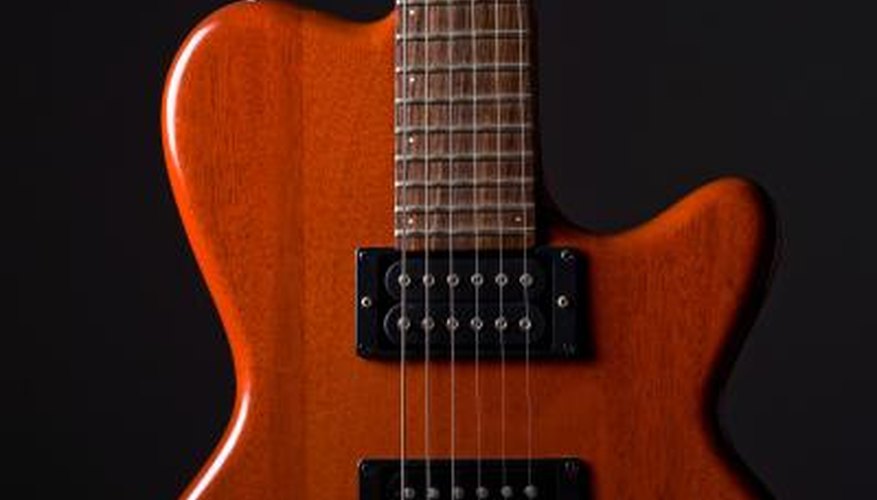Polyurethane/acrylic lacquer is one of the toughest lacquers available. It is used on guitar bodies and other musical instruments among other items. It dries to a clear, almost indestructible plastic-like finish. It is extremely hard to sand off by hand or with power sanders. The best way to remove this type of finish is with the help of chemical strippers. Strippers break down the polyurethane/acrylic compounds and turn them into a gel that you can scrape off.
- Polyurethane/acrylic lacquer is one of the toughest lacquers available.
- It is extremely hard to sand off by hand or with power sanders.
Put on rubber gloves and safety glasses. Spread a dropcloth under the work area where you will be removing the finish.
Dip a brush into an open can of stripper. Brush a heavy coat of the stripper over the lacquer. Wait 15 minutes.
- Dip a brush into an open can of stripper.
- Brush a heavy coat of the stripper over the lacquer.
Scrape a small area where you applied the stripper with a sharp, flat stick. Continue scraping if the lacquer has softened into a gel. If it is not sufficiently gelled, wait 15 more minutes.
Scrape the gelled lacquer from the inside out. Start in the centre of the project and scrape the lacquer off in big gobs over the edge of the wood.
Brush on more stripper if you find areas that have not gelled. Use the edge of the stick to remove gelled lacquer from cracks and inside tight corners. When all of the polyurethane/acrylic lacquer is removed, wait one hour for the wood to dry before handling.
TIP
Use 100-grit sandpaper to sand the area where you removed the lacquer to prepare for a new finish.
WARNING
Always wear eye protection and rubber gloves when working with chemical strippers. If some of the solution gets on your bare skin, wipe it off as soon as possible and wash with water. Chemical strippers will burn and blister skin.
